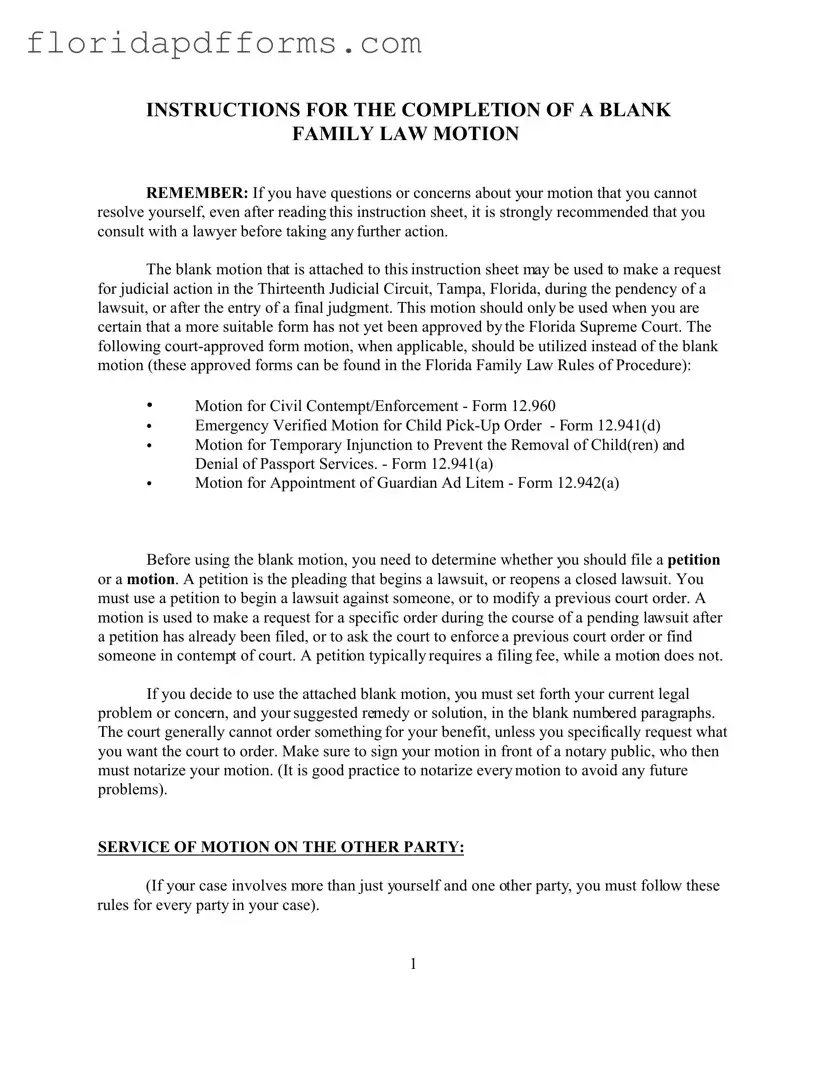INSTRUCTIONS FOR THE COMPLETION OF A BLANK
FAMILY LAW MOTION
REMEMBER: If you have questions or concerns about your motion that you cannot resolve yourself, even after reading this instruction sheet, it is strongly recommended that you consult with a lawyer before taking any further action.
The blank motion that is attached to this instruction sheet may be used to make a request for judicial action in the Thirteenth Judicial Circuit, Tampa, Florida, during the pendency of a lawsuit, or after the entry of a final judgment. This motion should only be used when you are certain that a more suitable form has not yet been approved by the Florida Supreme Court. The following courtapproved form motion, when applicable, should be utilized instead of the blank motion (these approved forms can be found in the Florida Family Law Rules of Procedure):
•Motion for Civil Contempt/Enforcement Form 12.960
•Emergency Verified Motion for Child PickUp Order Form 12.941(d)
•Motion for Temporary Injunction to Prevent the Removal of Child(ren) and Denial of Passport Services. Form 12.941(a)
•Motion for Appointment of Guardian Ad Litem Form 12.942(a)
Before using the blank motion, you need to determine whether you should file a petition or a motion. A petition is the pleading that begins a lawsuit, or reopens a closed lawsuit. You must use a petition to begin a lawsuit against someone, or to modify a previous court order. A motion is used to make a request for a specific order during the course of a pending lawsuit after a petition has already been filed, or to ask the court to enforce a previous court order or find someone in contempt of court. A petition typically requires a filing fee, while a motion does not.
If you decide to use the attached blank motion, you must set forth your current legal problem or concern, and your suggested remedy or solution, in the blank numbered paragraphs. The court generally cannot order something for your benefit, unless you specifically request what you want the court to order. Make sure to sign your motion in front of a notary public, who then must notarize your motion. (It is good practice to notarize every motion to avoid any future problems).
SERVICE OF MOTION ON THE OTHER PARTY:
(If your case involves more than just yourself and one other party, you must follow these rules for every party in your case).



